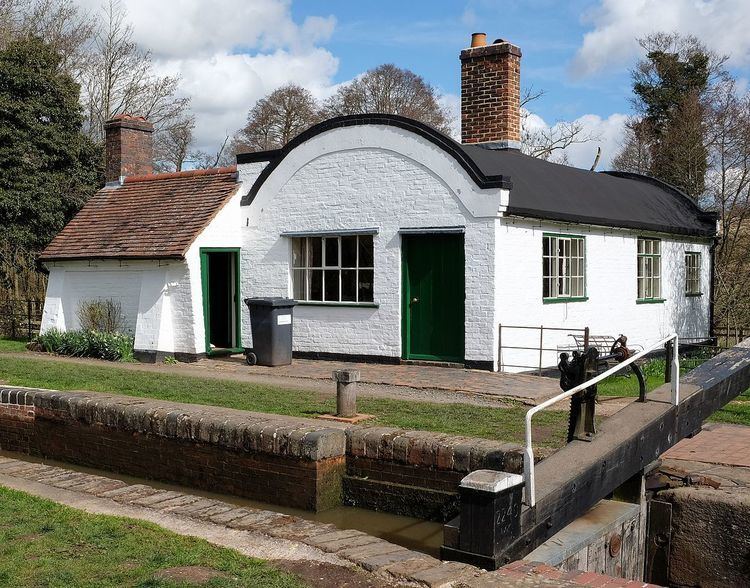 | ||
The term Lengthsman, coined in the 1700s, originally referred to someone who kept a "length" of road neat and tidy, but lengthsmen were used on canals and railways from the beginnings of both. On roads, lengthsmen were responsible for a few miles between adjacent villages and sometimes their duties encompassed the village itself. Employed by local parish councils, their job was, among other things, to keep grass and weeds down in the verge, keep drainage ditches clear, and sometimes repair fences. Litter, such as it was in those times, was collected and even wild flowers were tended to.
Contents
Lengthsmen on canals
Lengthsmen were specific workers on the English canal system from its inception in the late 18th century, "lengthsmen" being responsible especially for lengths of towpath and in the absence of a lock-keeper, for locks and their trappings and surroundings. Many lived in isolated cottages which, if close to a lock, might include lock keeper duties, including management of water levels and control of weirs. Lengthsmen were also responsible for repair and maintenance of banks on their "length", including cutting reeds and vegetation and the treading puddle clay into sections of bank which were weak or suffering from leakage. A feature of the Thames and Severn Canal was the provision of unusual accommodation specifically for lengthsmen. These buildings were circular and had three floors. Five examples, dating from the 1790s, remain to this day. This includes cottages at Chalford and Lowsonford (illustrated alongside.
21st century Lengthsmen
Lengthsmen are still employed on land by some parish councils (or groups of councils to enable financing) but security of tenure is tenuous. (e.g. Wyre Council employed a lengtsman at Kepple Lane in 2011). In 2003 Worcestershire County Council piloted a scheme which ran until 2006. Lengthsman tasks on land in the 21st century are/were biassed towards tending areas of a central "common" or greens and minor drainage matters. The term was picked up by [the English organisation] National Parks of England and Wales who used volunteers with specific rural skills to engage on "special projects" including hedge-laying and wall-building and sometimes training or familiarising "untrained" volunteers. In 2016 there is no mention of lengthsmen on the National Parks website.
Grand Union Lengthsmen
Through the winter of 2015/16, the Grand Union Canal milestones from Brentford to Braunston were marked, as a Special Lengthsman Project, by the planting of a single daffodil bulb by a volunteer en route between the terminals. Further potential GU lengthsman groups and individuals were identified enroute at the Slough Arm, at Coxley, Stoke Breurne and Blisworth as the markers were counted to Braunston.
Active Lengthsman teams operate on the Slough Arm of the Grand Union Canal and the southern reaches of the Grand Union Canal. Croxley Green on the Herts Berks borders is involved through Croxley Green Parish Council which is fully engaged via their "Towpath Taskforce" endeavour in liaison with the Canal & River Trust.
